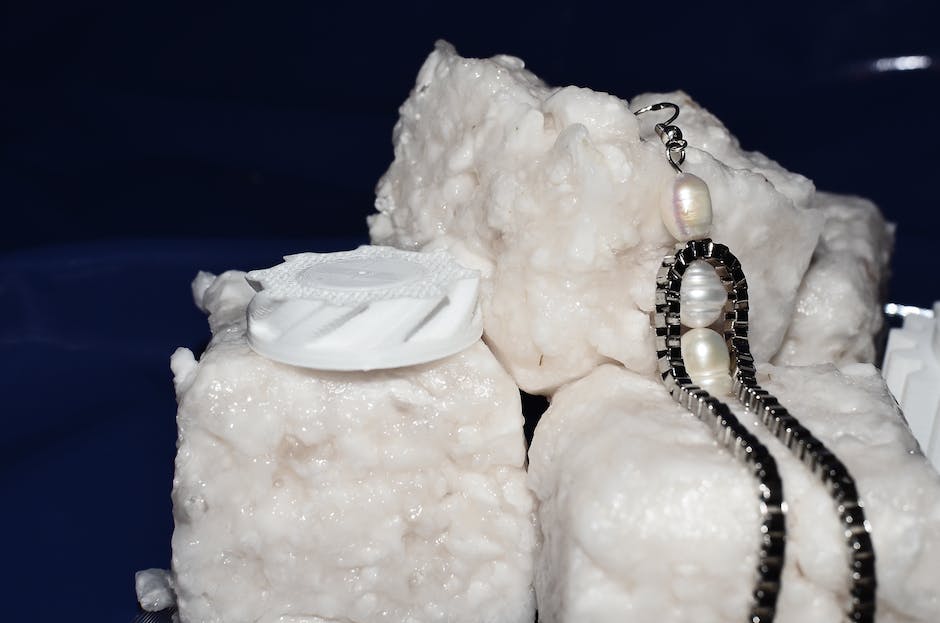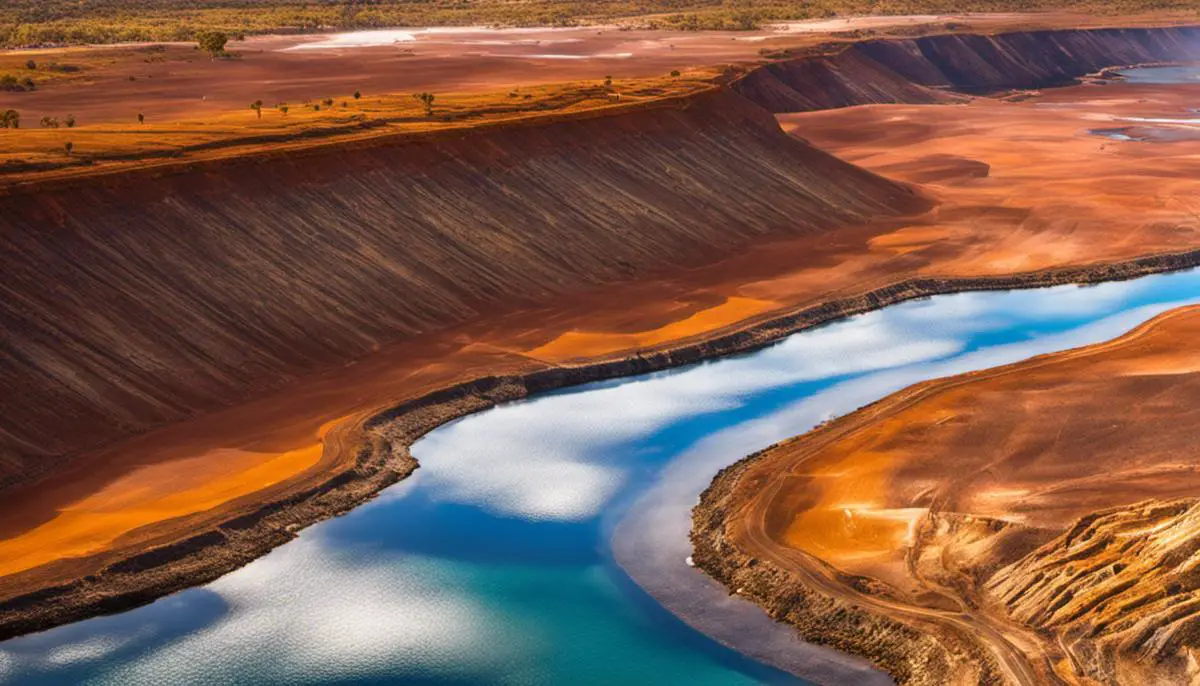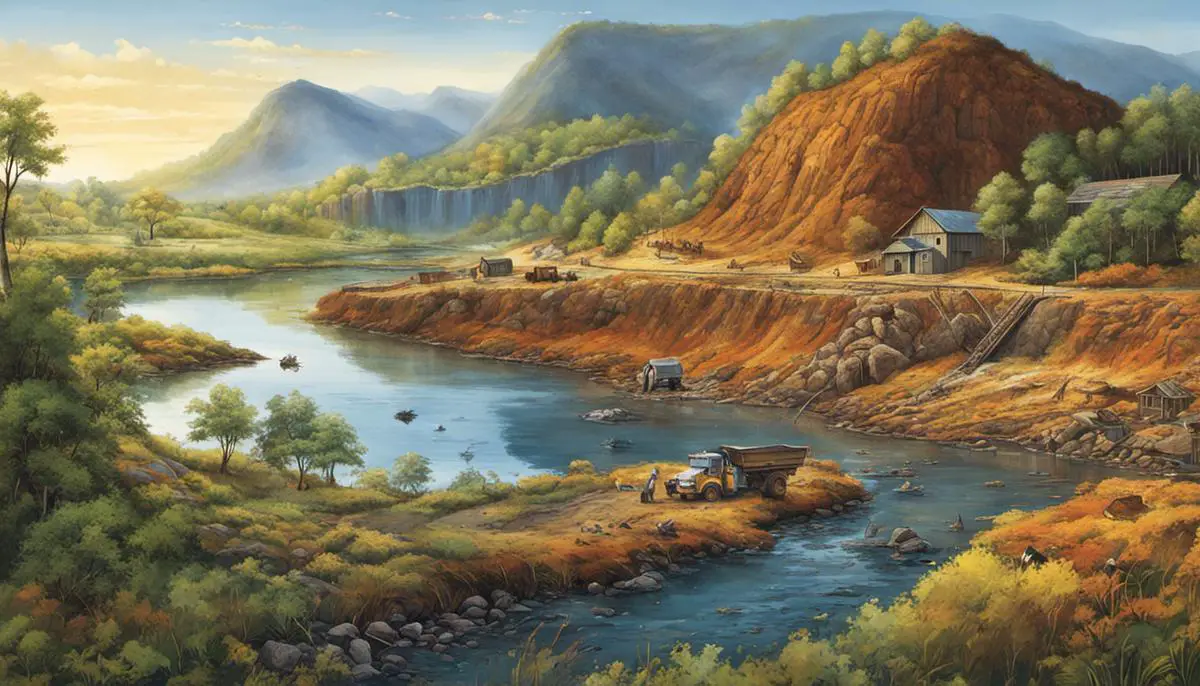Western Australia, an extraordinary region renown for its abundant mineral wealth, offers a fascinating exploration to the enthusiastic observer. A tapestry painted with a wide assortment of minerals, it sweeps across gold, iron ore, nickel, lithium, and many more. This vast expanse of exuberant mineral diversity is a testament to the tumultuous geological evolution that this land has experienced. While the richness of this land is unquestionable, it is essential to understand the intricate composite of geological history, environmental impact, and economic implications interwoven with it. This, in turn, stimulates an in-depth comprehension of the formation of mineral deposits, their dispersion, recipe, as well as the versatile and often complex influence that mineral extraction has on local and global levels.
Geological History and Formation of Mineral Deposits
Title: Geological History and Formation Mechanisms: The Secret to Western Australia’s Mineral Wealth
A land of exceptional topographical and geological diversity, Western Australia is globally renowned as a treasure trove of precious and base metals. This immense mineral wealth is not a mere coincidence, but rather the consequence of specific geological events and formation mechanisms that occurred over billions of years.
The geology of Western Australia boasts a vast array of rock units of varying ages sprawled across three major geological divisions, with each division reflecting a marked chapter in the Earth’s evolution – the Archaean, Proterozoic, and Phanerozoic Eons. The Archaean Eon witnessed the genesis of the Earth’s continental crusts, among which the Yilgarn and Pilbara Cratons of Western Australia represent some of the most well-preserved vestiges.
These cratons, being essentially stable blocks of the Earth’s crust and the underlying upper mantle, foster an environment propitious for the formation of lode deposits of gold, nickel, and other valuable resources. It is the age-old resilience of these cratons, enduring tectonic movements, and resisting deformation that provides stable environments for mineral accumulation and conservation over eons.
The vast Proterozoic basin, layered with sedimentary and volcanic rocks, holds untapped potential for other mineral resources. The intriguing juxtaposition of an oxygen-deprived atmosphere, an amalgamation of volcanic activity, and evolving plate tectonics during this era created an opportune setting for the generation of spectacular mineral sediment deposits, including vast reserves of iron ore and base metals.
Concurrently, the commencement of the Phanerozoic Eon marked the advent of tectonic plate collisions that gave rise to intrusion-related mineralization and hydrothermal ore-forming processes. The extraordinary Western Australia mineral wealth owes itself to these processes, responsible for the formation zones rich in base metals, precious metals, and rare earth elements.
Another subtler, yet pivotal aspect aiding mineral abundance is the role of weathering processes. The unique arid climatic conditions prevalent in majority areas of Western Australia contribute to extensive weathering of rock material, leaving behind concentrated ore deposits. The supergene enrichment process, where weathering causes leaching of certain elements, resulting in the residual concentration of metal ions, contributes immensely to the vast bauxite and nickel laterite profiles seen in Western Australia.
In essence, the immense mineral wealth of Western Australia stands as a testament to the incredible geological processes that have occurred there over billions of years. The fundamental understanding of such pathways offers not only a window into the evolution of our planet, but also the potential to predict future mineral occurrences and direct efficient exploration strategies.

Diversity and Distribution of Minerals
Highly valued mineral commodities widespread in Western Australia are grouped into five categories: energy minerals, iron ore, base metals, precious metals, and industrial minerals. The distribution of these resources reflects the geological history and processes that have shaped Western Australia over billions of years.
Energy minerals include coal, petroleum, and uranium. Western Australia’s sedimentary basins, particularly the large offshore basins, contain significant reserves of petroleum. Major producing regions include the Carnarvon and Perth basins, with gas and condensate playing a crucial role in the energy mix. Coal is mined at Collie, south of Perth, where it caters to the local power generation needs. Uranium deposits, often found in the sandstone-hosted deposits and unconformity-related deposits of the Proterozoic basins, are awaiting the global market conditions to be favorable for excavation.
Iron ore resources, predominantly hematite and magnetite, are huge in Western Australia, primarily situated in the Pilbara region. The Hamersley Group, composed of banded iron formations dating back to the Late Archaean and Early Proterozoic, harbors the bulk of these resources.
Base metal deposits – primarily copper, lead, zinc and nickel, occur within Archaean greenstone belts and Proterozoic sedimentary basins. Nickel sulfide deposits are unique to the Yilgarn Craton, while the Golden Mile in Kalgoorlie hosts the nation’s richest gold and copper deposits.
Precious metals – particularly gold and silver – are mined in several districts. The chief gold-producing region remains the Golden Mile in the Eastern Goldfields Superterrane of the Yilgarn Craton. Palaeoplacer gold deposits, deriving from weathering and erosion, feature prominently in the Witwatersrand Basin.
Industrial minerals, including diamonds, heavy mineral sands, bauxite, and mineral sands, also enrich Western Australia. Bauxite deposits are exploited mainly in the Darling Range for aluminum production, while diamonds are mined in the Kimberley, originally discovered in lamproite pipes. Australia’s vast coastline also supports the heavy mineral sands industry, renowned for its ilmenite, leucoxene, rutile, and zircon.
Therefore, the diverse mineral resources of Western Australia are not uniformly spread but rather cluster in specific regions. This distribution represents a tableau of ancient tectonic regimes, environmental conditions, and biological evolution, reinforcing the prime importance of geological processes over time in shaping the area’s mineral wealth.

Environmental Impact of Mineral Extraction
Having analyzed the geological diversity and mineral resources of Western Australia, it is equally critical to examine the environmental repercussions associated with the copious extraction of these resources. Although mineral extraction in Western Australia has delivered significant economic benefits, the associated environmental impacts necessitate careful investigation and management.
On one hand, the practice of mineral extraction contributes substantially to landscape degradation. Extensive mining operations often entail the removal of topsoil and vegetation, leading to a considerable disturbance of terrestrial ecosystems. Additionally, these activities often result in the generation of tailings, which, if improperly managed, can cause soil and water contamination.
Mining activities inadvertently exacerbate the release of toxic substances into the environment, particularly through acid mine drainage (AMD), a phenomenon where minerals exposed to air and water generate a highly acidic effluent. This issue particularly comes to the fore in mining regions like the Goldfields and the Kimberly, where sulfur-bearing minerals like pyrite are abundantly found. The acidic effluent not only threatens biodiversity by altering habitats and killing off indigenous plant and animal species, but also pollutes water resources, affecting agriculture and human health downstream.
Another significant environmental concern lies in the enormous energy consumption of extraction activities and subsequent carbon emissions. Western Australia’s mining industry, particularly the iron ore sector, is a leading consumer of diesel fuel, contributing to greenhouse gas (GHG) emissions and exacerbating climate change.
Conversely, the extraction of certain minerals provides a pathway to more sustainable practices. For example, the Greenbushes hard-rock lithium mine, the largest in the world, supplies a crucial component for the production of lithium-ion batteries, which power electric vehicles and renewable energy storage systems. This could significantly attenuate reliance on fossil fuels and aid in combating climate change.
Furthermore, rehabilitation initiatives post-mining have reshaped former mine sites into viable habitats, yielding some positive environmental results. These restored ecosystems often serve to compensate the loss of biodiversity due to mining activities.
There are also instances where mining and nature conservation efforts mutually benefit from each other. Mining companies play a critical role in discovering and conserving palaeontological sites and fossils, thereby contributing to scientific understanding of Earth’s past and supporting biodiversity conservation.
Although the current discourse primarily revolves around the problems posed by mining practices, it is salient that equally, if not more, attention is afforded to assessing and mitigating associated environmental risks. Collaborative enterprises between mining companies, environmental scientists, community groups, and governments are needed to strike a balance between the boon of mineral extraction and the exigency of environmental stewardship.

Economic Significance of Minerals
How then, does this vast mineral wealth of Western Australia translate into socioeconomic value? Western Australia contributes significantly to both its economy and on a global scale. As the state’s largest industry, and one of the main pillars of the Australian economy, the mining sector has been a massive boon for Western Australia economically. In 2018-19, this sector generated AUD 145 billion, approximately 72% of the state’s income from total merchandise exports, according to the Department of Mines, Industry Regulation and Safety, Western Australia.
Translating this into a global perspective, in relation to China’s rise as an industrial power, Western Australia’s iron ore, in particular, has a sizeable impact. The state is the world’s largest iron ore producer and contributes around 38% of global production, heavily relied upon by China’s steel manufacturing industry. This underpins intensive infrastructure development not only in China, but across the rising economies in Asia.
Moreover, the mining industry propels technological innovation, creating a wealth of opportunities. Technological advancements in mining, such as automation and remote operations, keep costs in check and enhance productivity. The introduction of artificial intelligence and machine learning for mineral exploration and extraction also augments efficiency, transforming how ore bodies are discovered, mined, and processed.
Furthermore, the extracted minerals themselves hold significant value, often as sought-after commodities in various industries. For instance, lithium and rare earth elements, the key components in batteries for electric vehicles and advanced electronic equipment, cater to burgeoning global demands.
In essence, the rich mineral resources of Western Australia are not a mere passive asset. They have significant roles in shaping the state’s economic structure, fueling development globally, and driving technological innovation. As much as the social, economic and environmental issues associated with mining are complex and demanding, the economic significance of the mineral wealth of Western Australia on both a local and global scale is indisputable.
To contend with future challenges and ensure sustainable practices, sound geological knowledge integrated with advanced technology is crucial. Moreover, optimized regulatory frameworks, mindful of environmental challenges, alongside strategy implementation that ensures fair distribution of benefits, will undoubtedly play a significant role in leveraging this mineral wealth for sustained economic growth and societal development.
This crucial interplay between geology, economy and technology formulates an interesting stage, where the challenges and opportunities coexist and drive progress. The mindset that seeks to balance resource exploitation and care for the environment is the answer to the burgeoning demands of an always-progressing society and an ever-evolving Earth. To profusely quote the great American philosopher Ralph Waldo Emerson, “Nature always wears the colors of the spirit,” suggesting that our attitudes and actions towards the Earth are a reflection of our collective spirit. As such, the spirit of sustained progress, grounded in respect and care for the Earth’s resources, should shape the future of mining and resource development in Western Australia and beyond.

Demystifying the richness of Western Australia’s mineral kingdom proffers insights that are as intriguing as they are informative. An exploration steeped in the geological narrative reveals a riveting odyssey, marked with diverse critical events, finally culminating into the present-day mineral wealth. Simultaneously, a deep dive into the realm of extraction bequeaths a grasp of the environmental impacts, targeted mitigation, and progressive sustainable practices. While the economic significance of these mineral resources uncovers the imperativeness for the local, national, and global economies – a necessity that mandates sustainable future development and judicious utilization. Thus, throughout this journey, it becomes evident that the story of Western Australia’s mineral wealth is one that echoes far beyond its glittering rocks and soil.






